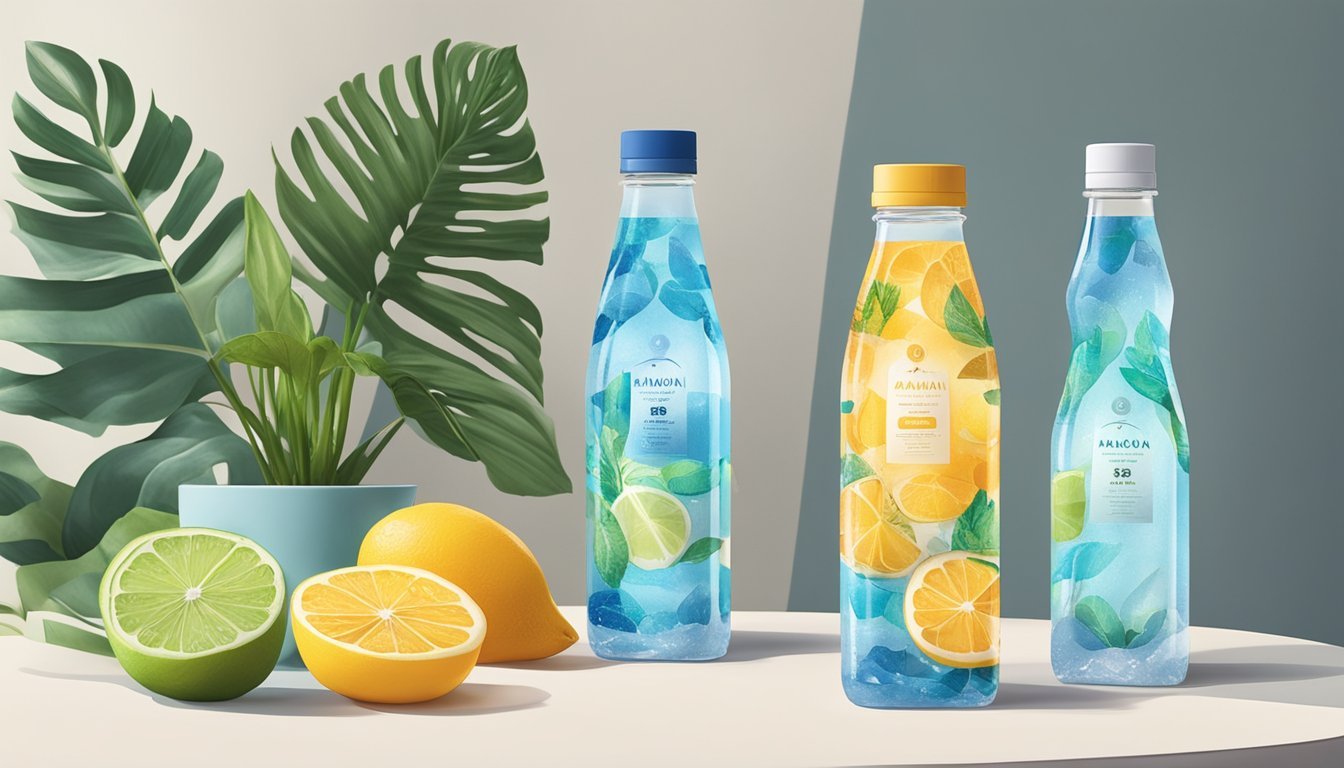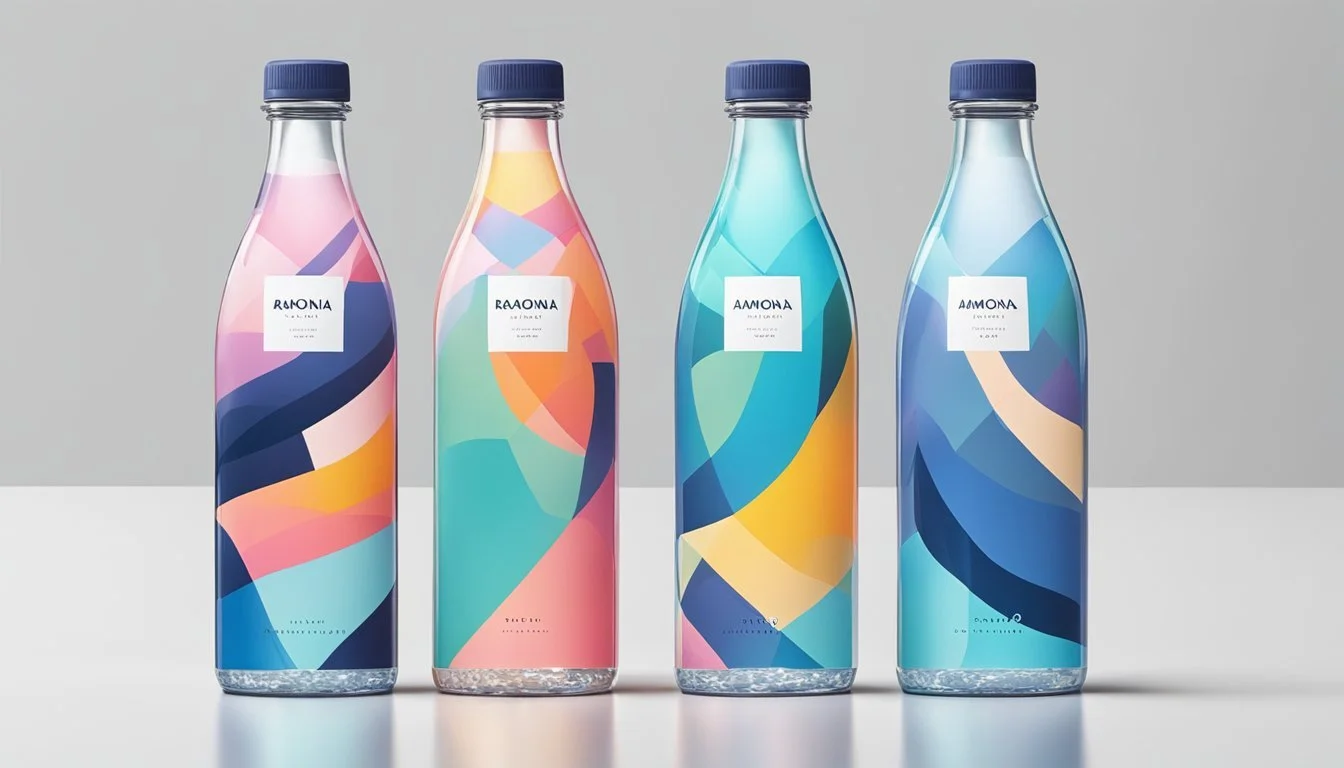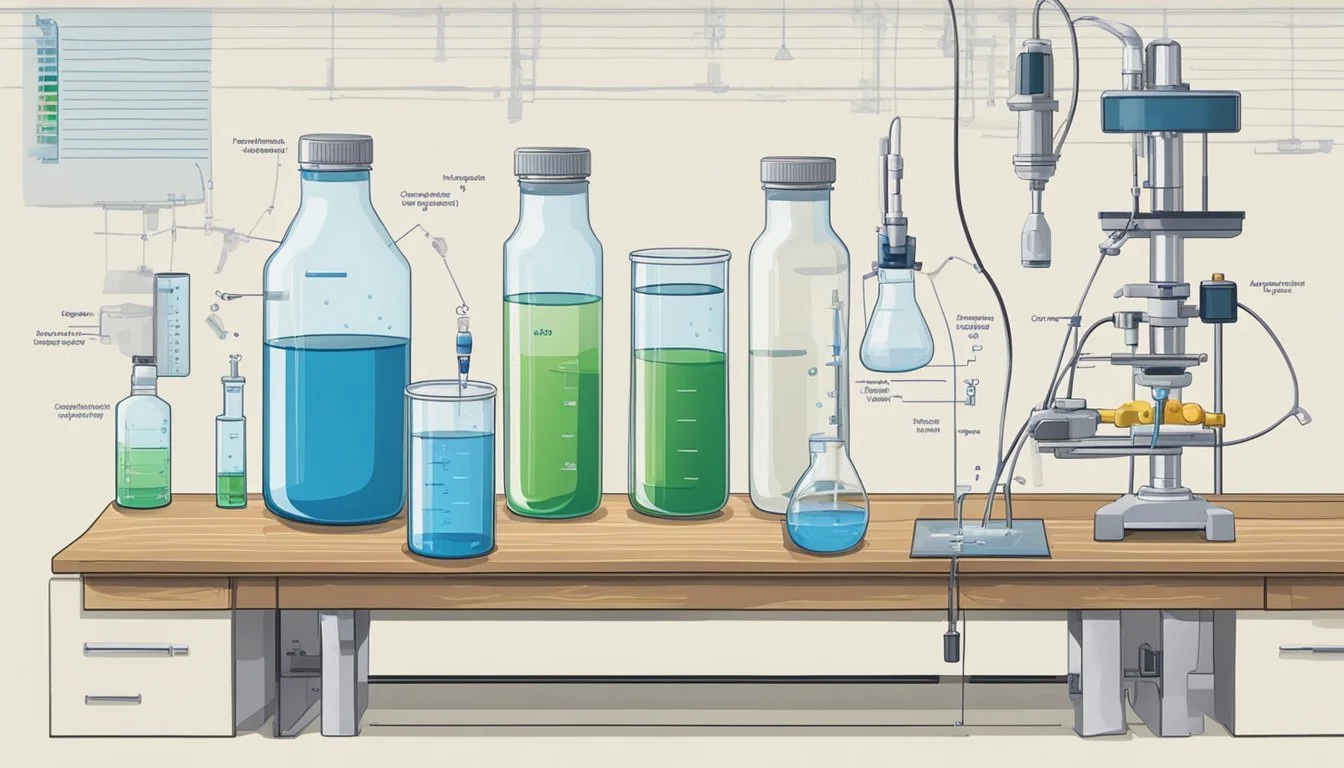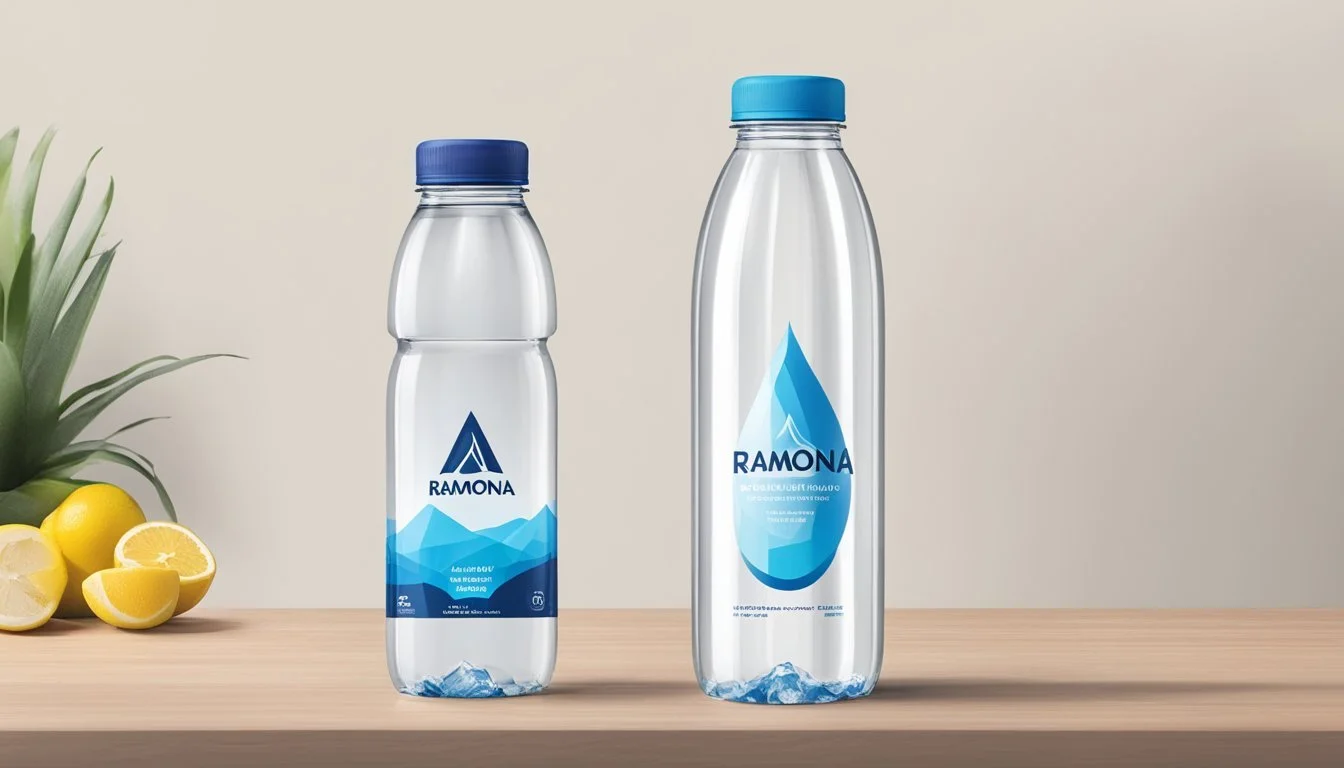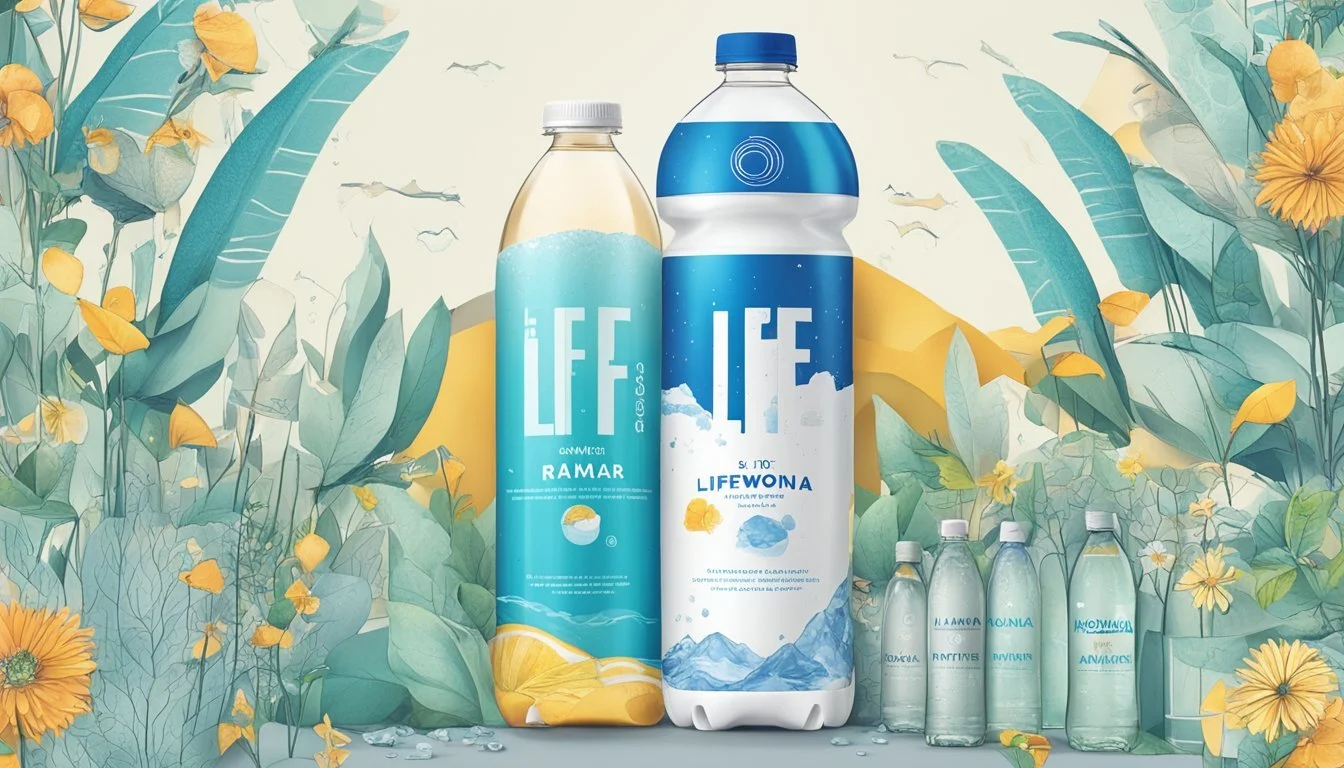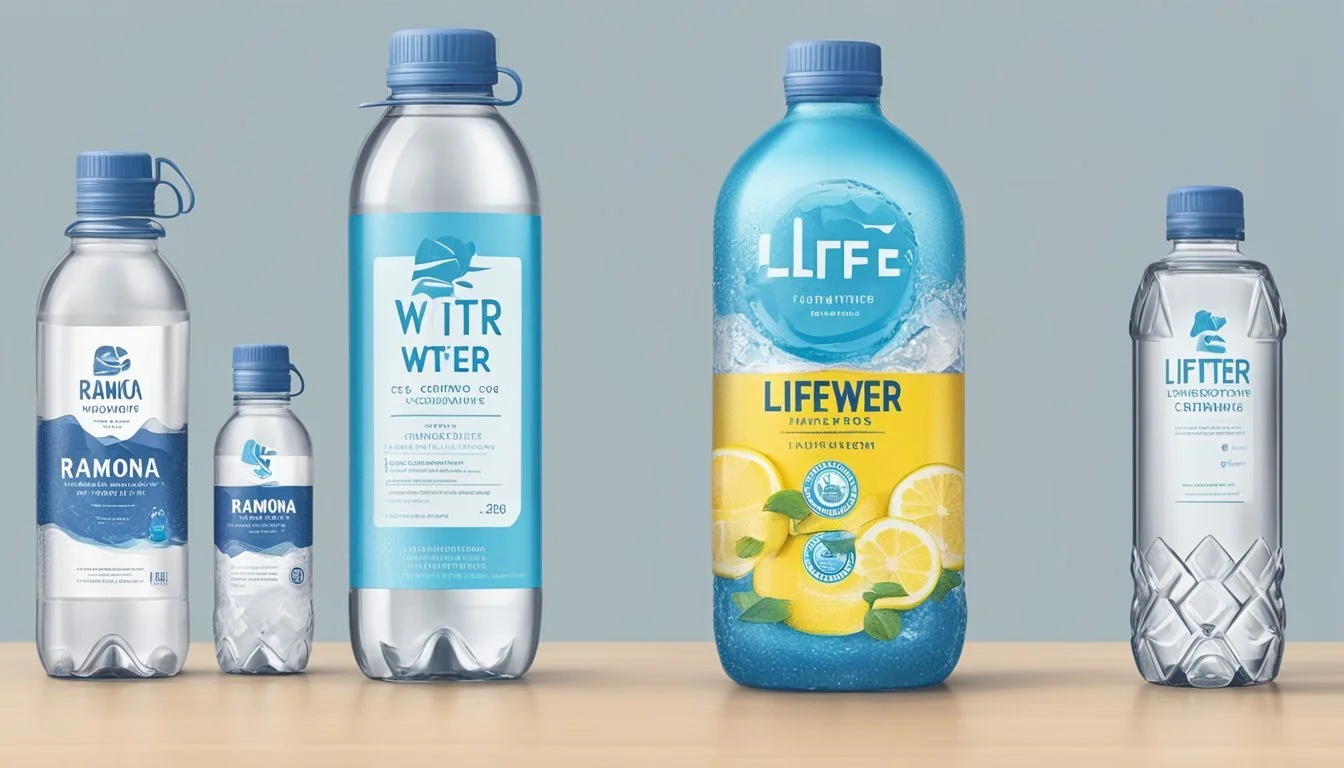LIFEWTR vs. Ramona
Which Bottled Water Stands Out?
LIFEWTR and Ramona are two contenders in the bottled water market, each bringing their own set of attributes to the table. LIFEWTR emphasizes artistic packaging and a balanced pH level, generally ranging from 6.4 to 7.4. This slightly acidic to neutral pH promotes a clean and crisp taste, appealing to health-conscious consumers. Additionally, the brand's focus on art and design makes it a standout in terms of visual appeal.
Ramona, though less discussed in mainstream comparisons, offers its own unique qualities. Known for its pure and reliable taste, Ramona provides consumers with a refreshing experience free of any artificial aftertaste. When pitting LIFEWTR against Ramona, it boils down to a choice between a brand that champions artistic expression and one that prioritizes purity and simplicity.
While both brands deliver on taste and quality, their primary distinctions lie in their branding and additional features. LIFEWTR's sleek, art-inspired bottles might attract those looking for aesthetic and functional hydration. Ramona, with its straightforward approach, remains a solid option for those who prefer a no-frills bottled water experience.
Understanding Bottled Water
Bottled water is more than just a convenience; it is a product with a rich history and various types designed to meet different needs. This section covers its background and classifications.
History and Development of Bottled Water
The history of bottled water dates back to ancient civilizations where water from springs was bottled for health and spiritual reasons. In the 17th and 18th centuries, European spas started selling bottled spring water, believing it to have medicinal properties.
During the 1970s, the commercialization of bottled water saw a significant rise in popularity, particularly in the United States. Advances in plastic bottle technology (PET bottles) made it easier and cheaper to produce and distribute. Associations with purity and health have only increased demand over the years. Today, the bottled water industry is a massive global market with a variety of options available to consumers.
Different Types of Bottled Water
Spring Water: Sourced from underground formations and naturally filtered through rocks, retaining its mineral content.
Mineral Water: Contains a specific mineral content that is naturally present in the water due to its source, often used for its health benefits.
Purified Water: Created through processes like distillation, deionization, or reverse osmosis to remove impurities and contaminants. It often starts as tap water.
Distilled Water: A type of purified water where contaminants and minerals are removed through distillation, making it one of the purest forms.
Sparkling Water: Infused with carbon dioxide gas to create bubbles, providing a fizzy alternative to still water.
Each type offers unique characteristics and benefits, catering to different consumer preferences and health considerations.
Examining Water Quality
Water quality is critical when comparing different bottled water brands. This section will focus on the filtration processes and the sourcing of water for LIFEWTR and Ramona.
Filtration Processes
LIFEWTR utilizes a multi-step purification process that includes reverse osmosis and other filtration methods. This technique effectively removes contaminants and impurities, resulting in high purity water. The addition of electrolytes for taste is notable, ensuring a clean and crisp finish.
Ramona, on the other hand, emphasizes minimal processing to retain natural properties. Their water undergoes distillation and filtration to remove most impurities, but it strives to maintain essential minerals that contribute to taste. The balance between purity and natural mineral content is key to Ramona's offering.
Sourcing of Water
LIFEWTR sources its water primarily from municipal supplies that undergo rigorous purification. This ensures a consistent quality and taste across all bottles. Each batch is carefully monitored to maintain the brand's standards.
Ramona sources its water from natural springs, providing a more authentic and fresh taste profile. The origin of the spring water is integral to its branding, highlighting a commitment to natural sources. The water is tested regularly to ensure it meets safety and quality standards without compromising on its natural mineral content.
Health and Hydration
Both LIFEWTR and Ramona offer hydration benefits but differ in their electrolyte and mineral content, impacting health in unique ways.
Electrolytes and Minerals
Electrolytes like sodium, potassium, and magnesium play crucial roles in maintaining body functions.
LIFEWTR contains a balance of these minerals to enhance taste and hydration. With a pH ranging from 6.4 to 7.4, it provides a slightly acidic to neutral profile. This balance can be beneficial for those who need an additional mineral boost, especially after exercise.
Ramona water, on the other hand, focuses on natural mineral content from its source. It provides essential electrolytes naturally present in the water without additional enhancements. This can be appealing for consumers looking for water with natural mineral composition without added ingredients.
Health Benefits of Hydration
Proper hydration is essential for various body functions, including temperature regulation, joint lubrication, and nutrient transport.
Both LIFEWTR and Ramona offer effective hydration solutions, but each has unique health benefits based on its composition. LIFEWTR’s added electrolytes can be particularly beneficial for active individuals needing to replenish lost minerals during intense physical activity.
Ramona’s emphasis on natural mineral content can appeal to consumers who prefer water in its most natural form. Both options ensure that users meet their daily hydration needs effectively, supporting overall health and wellbeing.
Tasting Notes of LIFEWTR and Ramona
In comparing the taste and acidity of LIFEWTR and Ramona, key elements such as flavor profile and pH balance will be explored to provide a detailed understanding of these bottled waters.
Flavor Profiles
LIFEWTR offers a clean and crisp taste with a subtle mineral presence, creating a refreshing drinking experience. The taste is often described as neutral with minimal aftertaste, making it appealing to a broad audience. Many enthusiasts note its pure taste and lack of any overpowering flavors, which adds to its appeal.
Ramona, on the other hand, is known for its slightly more distinctive taste. It has a hint of natural minerals and a slight sweetness, which some might find enhances its refreshing qualities. This natural mineral presence can give Ramona a slightly more robust flavor compared to LIFEWTR. The aftertaste is mild, leaving the palate clean and ready for more.
Acidity and PH Levels
LIFEWTR typically boasts a pH level ranging from 6.4 to 7.4, indicating a neutral to slightly acidic profile. This balance makes it well-suited for those seeking water that is less harsh on the stomach and provides a smooth mouthfeel. The pH-balanced nature of LIFEWTR ensures it maintains a pure taste without any sharp acidity.
Ramona's pH level usually sits within a similar range, emphasizing a focus on neutral pH that aligns with the body’s natural balance. This neutrality in acidity plays a pivotal role in its mouthfeel, making it gentle and easy to consume in larger quantities. The pH balance in Ramona contributes to its pure and smooth taste, adding to its overall drinking experience without overwhelming the senses.
Analyzing Brand Propositions
LIFEWTR and Ramona both position themselves as premium bottled water brands but employ different strategies to stand out in a competitive market. Their brand philosophies, product lines, and market positioning reflect unique approaches tailored to appeal to distinct customer preferences.
LIFEWTR: Brand Philosophy and Product Line
LIFEWTR, owned by PepsiCo, emphasizes a blend of hydration and inspiration through the visual arts. Each bottle features designs by emerging artists, creating a visually appealing product. This focus on art and design differentiates it from other bottled water brands and appeals to a more aesthetically inclined consumer base.
LIFEWTR maintains a slightly alkaline pH and adds electrolytes for taste. It's positioned as a premium water brand, with pricing reflecting its high-end market strategy. The brand targets wellness-oriented consumers who value both the physical and inspirational benefits of their products.
Ramona: Brand Story and Offerings
Ramona positions itself as a niche water brand, focally sourcing its products from distinct natural springs known for their purity. Unlike LIFEWTR, which incorporates modern art and design, Ramona roots its branding in the tradition and heritage of its water sources.
Ramona offers a range of products that cater to various preferences, including still and sparkling options. The emphasis on natural purity and artisanal collection methods appeal to a consumer base that prioritizes authenticity and natural origins. Ramona's product line is less about stylistic branding and more about the quality and story behind the water.
Packaging and Environmental Impact
Packaging and environmental impact are key concerns when evaluating bottled water brands like LIFEWTR and Ramona. This section will focus on the materials used and their sustainability, along with the broader environmental effects of bottled water.
Materials and Sustainability
LIFEWTR uses plastic bottles that are fully recyclable. These bottles are made from PET plastic, which is BPA-free. PET plastic is preferred in the industry for its durability and recyclability. Recyclable materials contribute to sustainability by reducing waste.
Ramona, contrastingly, opts for aluminum cans in its packaging. Aluminum is also highly recyclable and has the advantage of being infinitely recyclable without loss of quality. This attribute significantly boosts its sustainability profile.
The choice of materials plays a crucial role in the sustainable initiatives of these brands. Recyclable PET plastic and aluminum both reduce the reliance on single-use plastics, helping to mitigate the environmental impact.
Bottled Water and the Environment
The environmental impact of bottled water extends beyond just the materials used. Plastic bottles have a substantial carbon footprint due to the energy required in their production and recycling processes. Although LIFEWTR's plastic bottles are recyclable, if not properly disposed of, they can contribute to pollution and a larger environmental burden.
Ramona's aluminum cans have a different environmental cost. While the creation of aluminum is energy-intensive, its infinite recyclability can lead to less environmental degradation over time compared to single-use plastic. Proper recycling of aluminum can significantly reduce its negative environmental effects.
Both brands strive to align with guidelines from the Environmental Protection Agency (EPA) concerning sustainability and reducing environmental harm. Their efforts highlight the need for responsible consumption and disposal by consumers to maximize the eco-friendly potential of their chosen materials.
Consumer Insight and Market Analysis
Consumer preferences in bottled water often reflect perceptions of quality, taste, and brand loyalty. This analysis explores the popularity and taste distinctions between LIFEWTR and Ramona.
Popularity and Trends
LIFEWTR, backed by Pepsi, has a strong market presence and uses clever advertising and artistic labels to attract consumers. With placement in prominent retail locations and strategic pricing, LIFEWTR commands a loyal customer base.
Ramona, a smaller but emerging brand, leverages social media platforms like Instagram to engage with health-conscious consumers. They focus on sustainable practices and premium water sources, which resonate with eco-minded buyers.
Market research indicates a growing trend towards premium bottled waters, with consumers willing to pay extra for perceived health benefits and unique branding.
Comparative Taste Test Results
In various blind taste tests, including those conducted on platforms like YouTube and articles from Thrillist, LIFEWTR frequently scores high for its crisp, refreshing taste. Participants appreciate its clean flavor profile, often ranking it among the top bottled water brands.
Ramona also fares well in taste tests, noted for its natural spring water origins and subtle mineral presence. Although less widely recognized, those who taste Ramona often commend its pure and refreshing taste, suggesting it may gain wider acceptance as more consumers become aware of it.
Taste tests continue to be a crucial tool in gauging consumer preferences and shaping market strategies for both brands. These results help inform potential buyers about the sensory experiences they can expect from each brand.
Regulations and Safety Standards
Both LIFEWTR and Ramona bottled water brands comply with stringent regulatory standards to ensure safety and quality. Comparing these aspects helps consumers make informed choices based on health benefits and reliability.
Quality Assurance
LIFEWTR and Ramona adhere to rigorous quality assurance protocols monitored by the U.S. Food and Drug Administration (FDA). The FDA ensures that both bottled water brands meet safety and health standards. These standards are crucial to prevent contamination and ensure the water is safe for consumption.
LIFEWTR often emphasizes its higher pH level, suggesting it aligns closely with the body's natural pH. On the other hand, Ramona focuses on a clean and pure taste, achieved through multiple filtration processes. Regular testing and monitoring further assure the consistent quality of both brands.
Bottled Water Regulations
By federal law, bottled water regulations must be at least as stringent as Environmental Protection Agency (EPA) standards for tap water. The FDA oversees these regulations, requiring bottled water to undergo extensive testing for contaminants such as bacteria, chemicals, and heavy metals.
LIFEWTR and Ramona are subjected to these stringent tests to ensure they comply with national safety standards. This includes testing for microbial safety, which is vital for preventing waterborne illnesses. Both brands meet or exceed these regulatory requirements, providing consumers with a reliable source of safe drinking water.
More About LIFEWTR
Icelandic Glacial vs LIFEWTR: Which Bottled Water is Better?
LIFEWTR vs Kirkland Signature: Which Bottled Water is Better?
LIFEWTR vs Mountain Valley Spring Water: Which Bottled Water is Better?
LIFEWTR vs Richard's Rainwater: Which Bottled Water is Better?
LIFEWTR vs Whole Foods Italian Still Mineral water: Which Bottled Water is Better?

